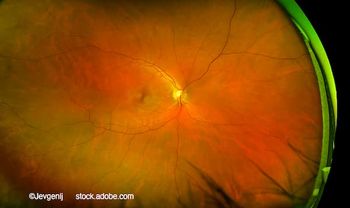
One-third of diabetics fail to get eye exams
An estimated 25 million people in the United States have diabetes and face a higher risk for ophthalmic complications, including glaucoma, cataracts, and diabetic retinopathy. However, more than one-third of all persons in the United States with diabetes did not undergo an eye exam in the past year, said Fang Ko, MD.
Seattle-An estimated 25 million people in the United States have diabetes and face a higher risk for ophthalmic complications, including glaucoma, cataracts, and diabetic retinopathy. However, more than one-third of all persons in the United States with diabetes did not undergo an eye exam in the past year, said Fang Ko, MD.
The need for dilated eye exams is an important problem as the prevalence of diabetes increases, said Dr. Ko, a medical resident at the Wilmer Eye Institute, Johns Hopkins University School of Medicine, Baltimore. An estimated 7 million people may have diabetes but are undiagnosed.
“About a third of people with diabetes have diabetic retinopathy, and the rates of diabetes are increasing among all ethnicities and all age groups,” Dr. Ko said. “The rates of nonrefractive visual impairment have been rising, which is not surprising, given the rising rates of diabetes.”
Data were analyzed from the National Health and Nutrition Examination Survey, and in 2005 to 2008, 10,480 participants were surveyed, and 1,298 reported having diabetes.
These participants were surveyed about their diabetic care, and results showed that 38% of people with diabetes currently residing in the United States reported not having a dilated fundus exam in the past year.
Individuals at a greater risk for not undergoing an eye exam tended to be younger (64% of those aged 20 to 39 years), lacked access to health care (80%), had no insurance (64%), and stated that a doctor had not told them that their eyes were affected by diabetes (59.6%).
Duration of disease also did not make a difference as those had been diagnosed with diabetes over a longer duration were no more likely to receive a dilated eye exam than those with shorter duration (35% of those with diabetes ≥10 years duration, and 39% of those with diabetes <10 years, did not receive an eye exam, p = 0 .14).
Programs are needed to focus on those at greatest risk of not receiving an eye exam.
“We need to target primarily younger people, increase availably of care, make if affordable and educate patients about the connection between diabetes and blindness,” Dr. Ko said.
For more articles in this issue of Ophthalmology Times Conference Brief,
Newsletter
Don’t miss out—get Ophthalmology Times updates on the latest clinical advancements and expert interviews, straight to your inbox.



















































.png)


